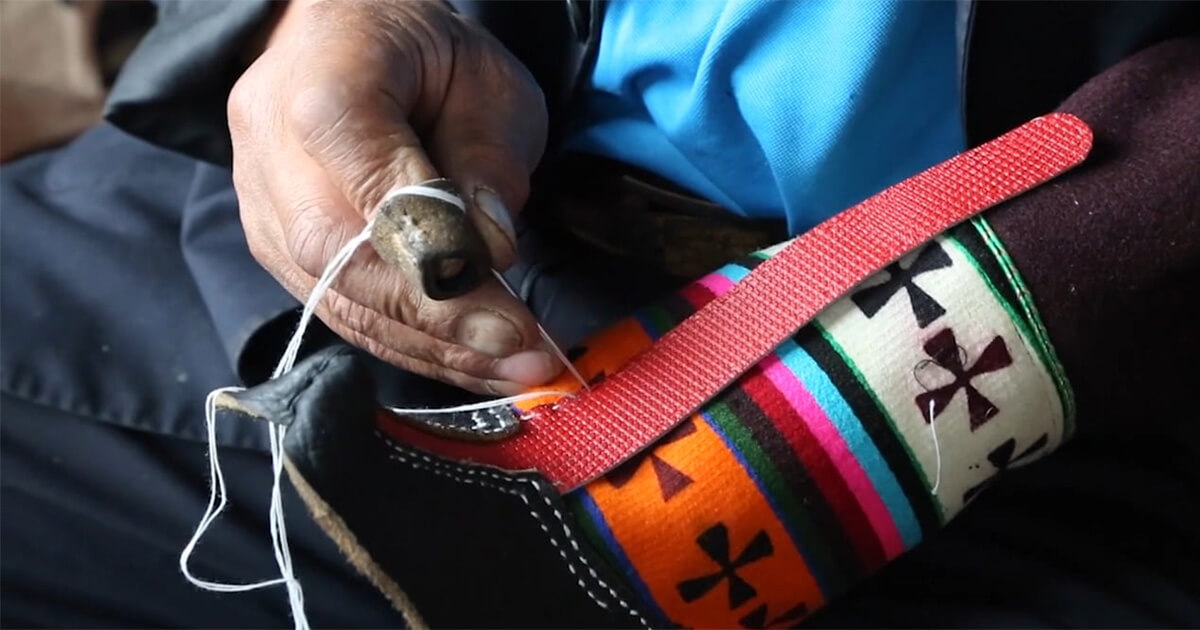Traditional Tibetan boots—typically warm and colorful—are no longer the daily footwear for ordinary Tibetan nomads or farmers due to the prevalence of sneakers and other mass-produced shoes. However, Tibetan boots are still commonly worn during celebratory occasions like New Year’s, weddings, and housewarming parties. Two remaining groups that still don traditional boots daily are the monastic nuns and monks who wear them often during their daily sutra sessions and formal religious rituals.
Overall, Tibetan boots—much like Tibetan robes—are seen and worn more as cultural representations than as practical common clothes.

Tibetan boots, often knee-high and fastened below the knees with a leather string, have a variety of names depending on regional linguistic differences or differences in material. The most common materials for Tibetan boots are cowhide, pigskin, corduroy, and pulu, a traditional woolen fabric. In most cases, boots are made without differentiating between the right and left foot. Styles are often indistinguishable between men and women, and materials are similar across different regions and age groups. Boots may be either unlined or cotton-padded.
Cross-shaped designs on the head of cowhide or corduroy boots are most common. The sole may be sewn with as many as five to seven layers of cowhide, or one to three layers of cowhide with cotton-padding and hay-matting. The thickness of the sole may be about three-quarters of an inch to an inch and a half. The head of corduroy boots is also made of cowhide or tanned pigskin. There are many types of pulu boots, with different colors of pulu and embroidered patterns above the ankle.






Although Tibetan boots are less commonly worn today, the Tibetan boot-making industry is still vibrant, due to tourism and tourism-fueled arts and craft enterprises. There are still Tibetan communities, villages, and small businesses that specialize in making traditional Tibetan boots of various styles. These enterprises not only satisfy local people’s footwear needs for special occasions, but also cater to the demands of tourists whose numbers are increasing and who often delight in keeping a piece of the Tibetan Plateau and Tibetan culture with them in the form of warm, colorful boots.




